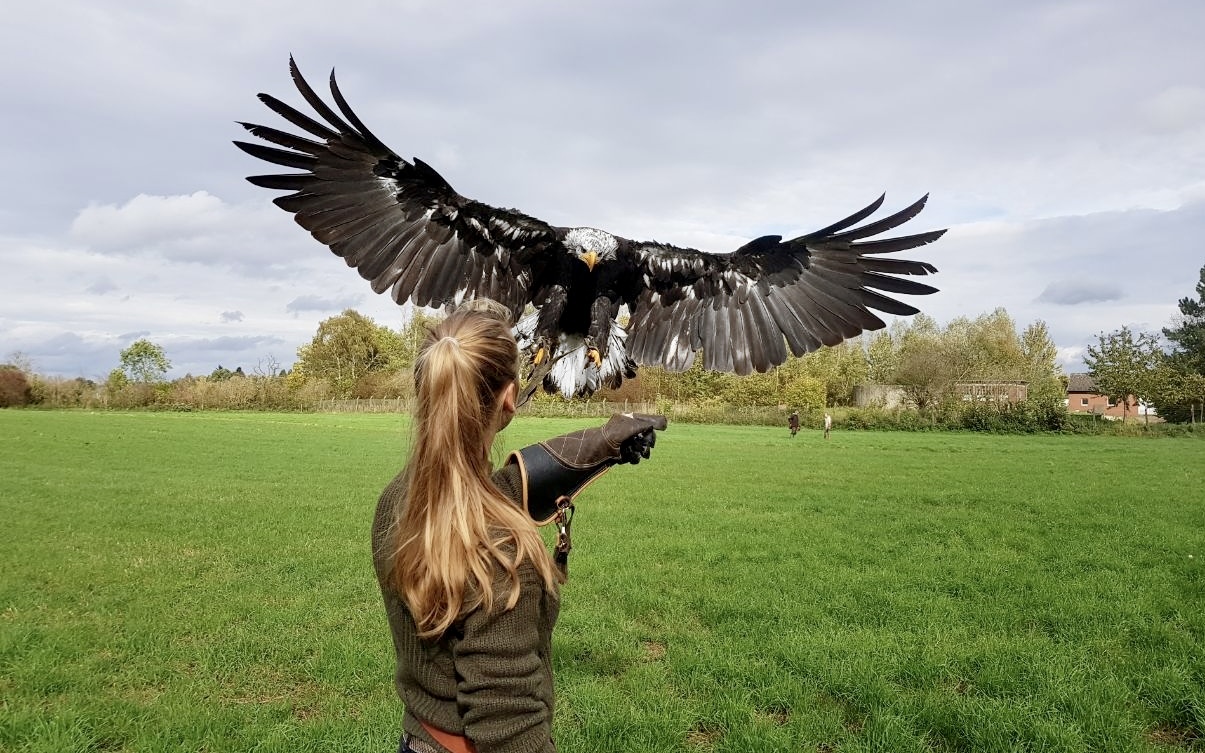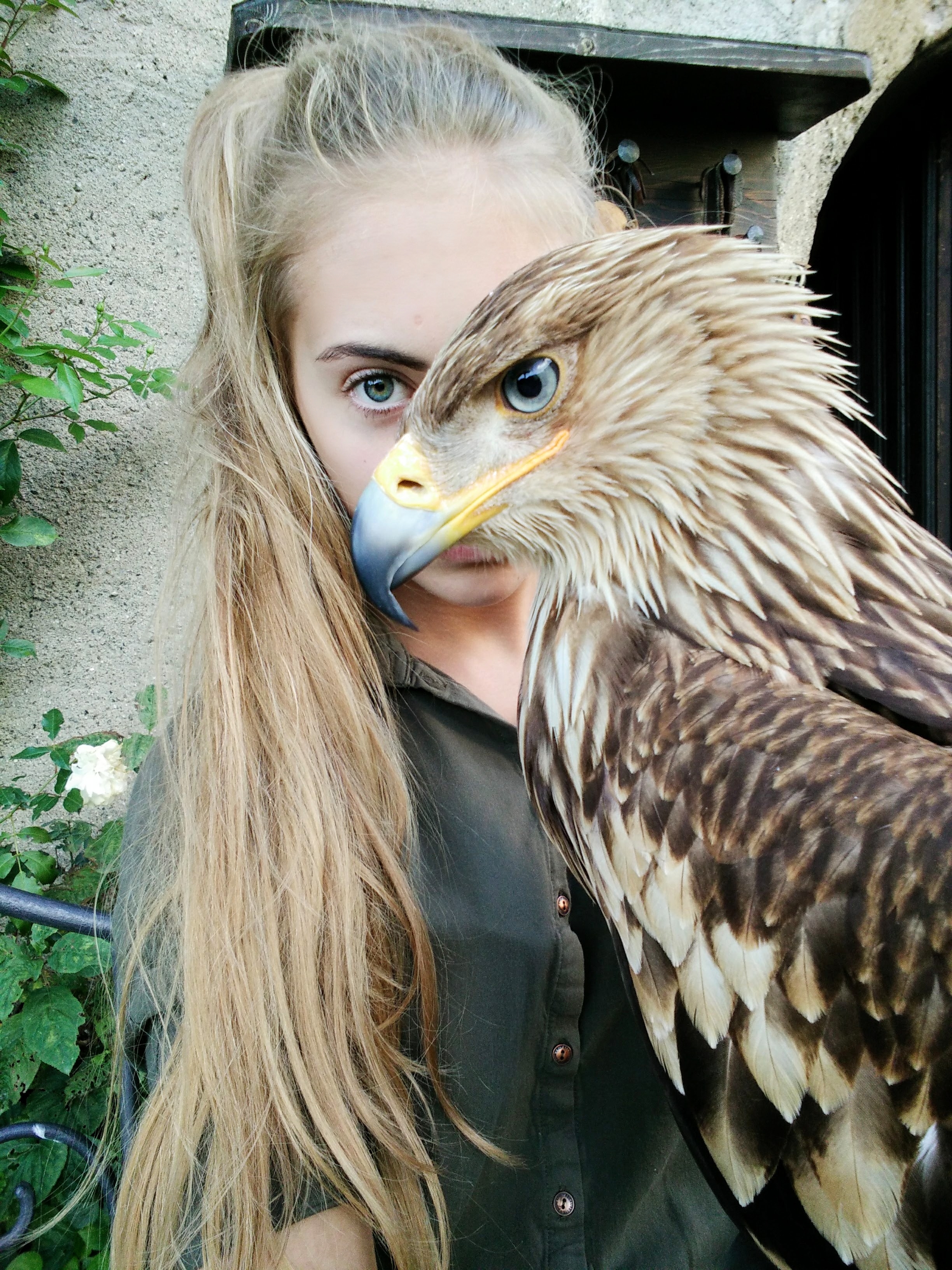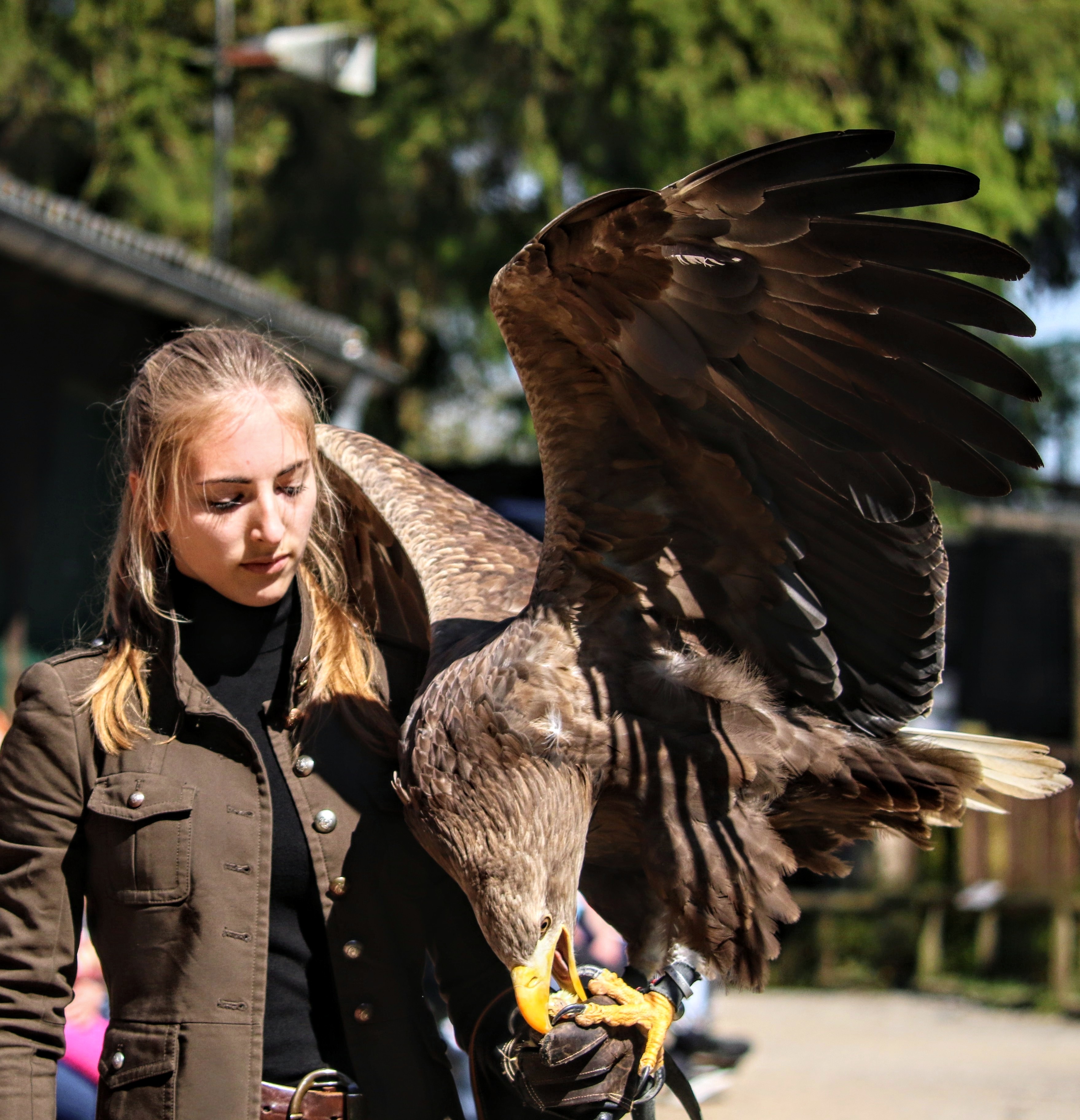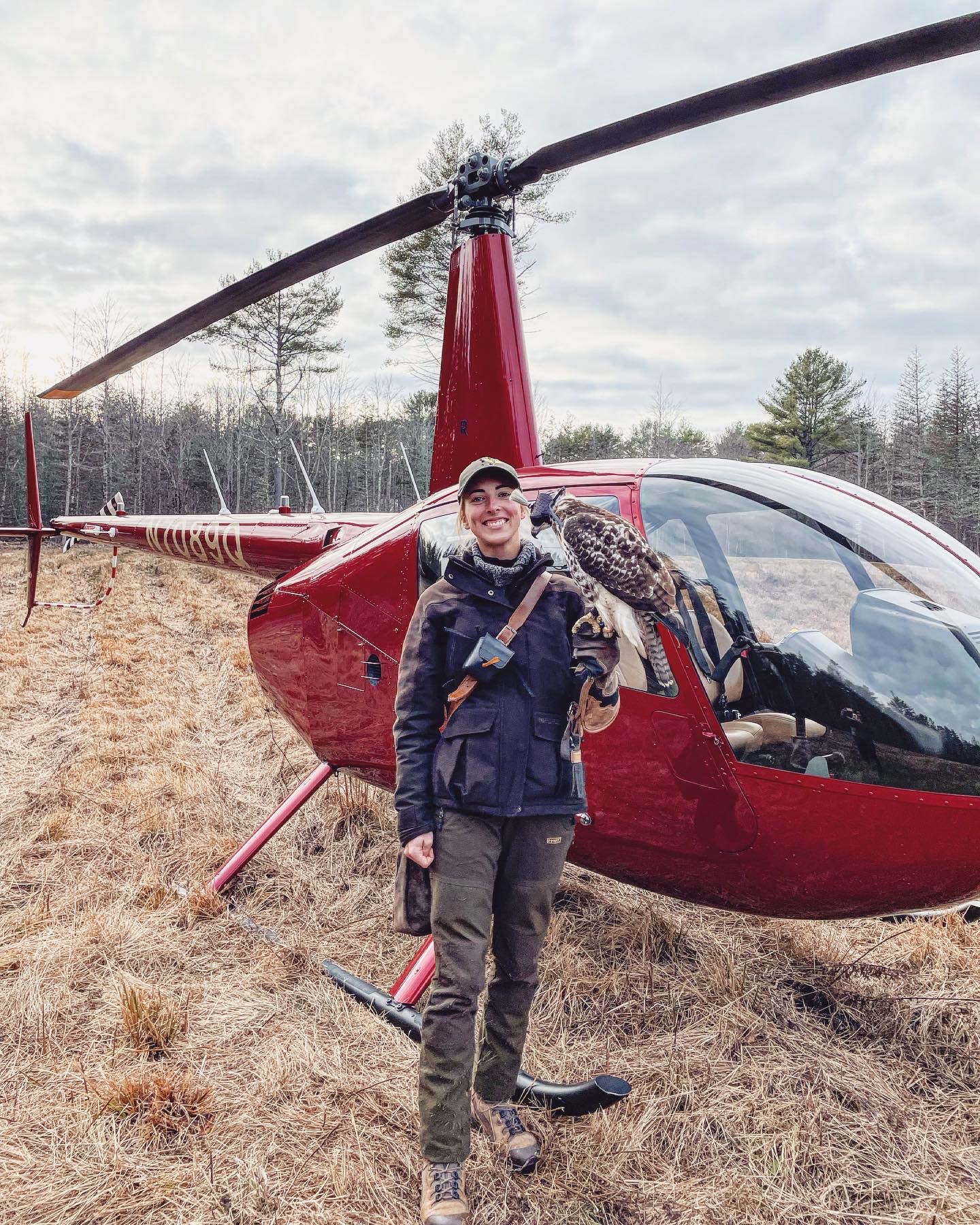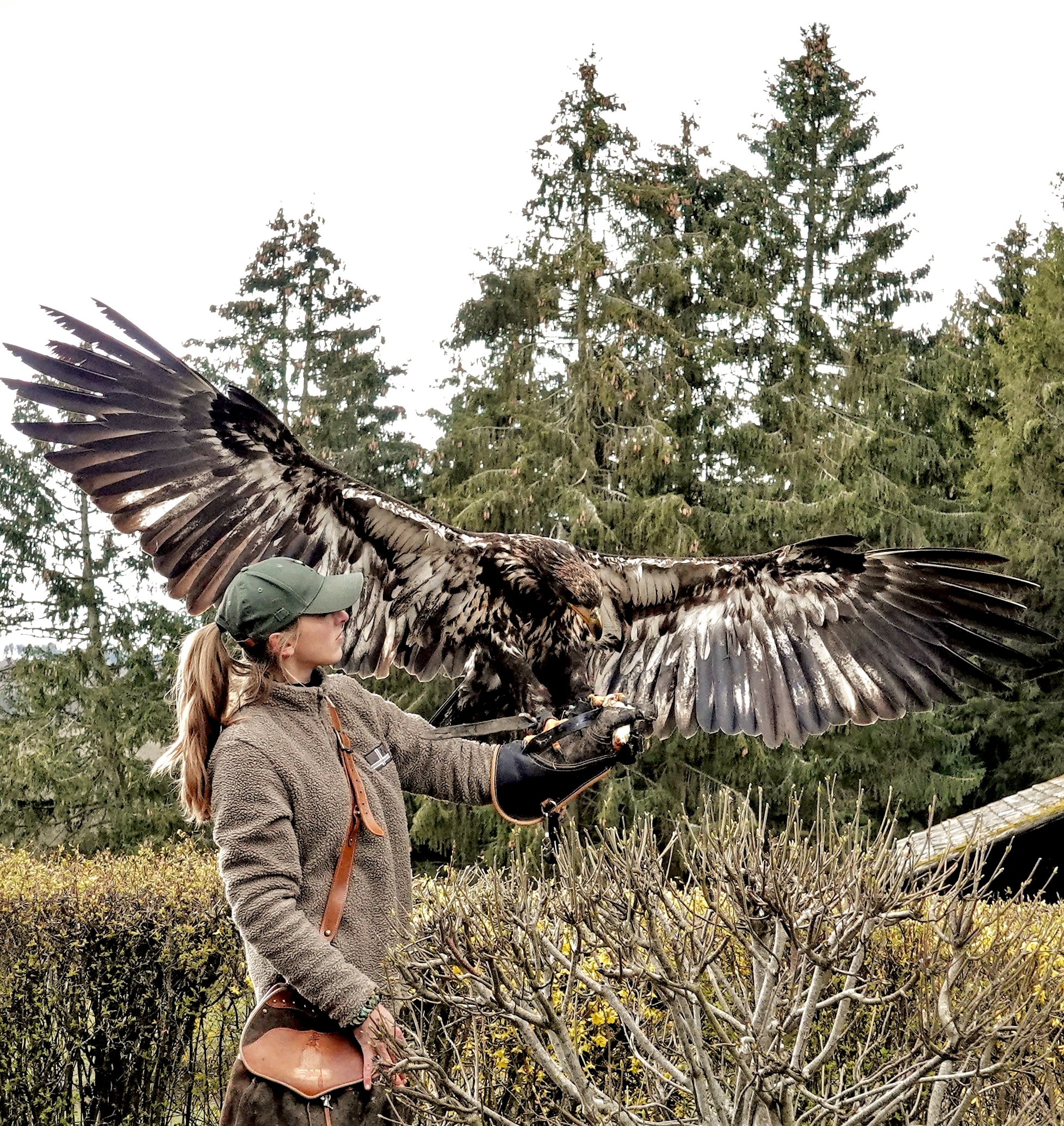Queen of the Raptors
Tell us a bit about yourself, where you are from, what do you do for a living?
Hi! I’m Olivia, I am 26 years old, I grew up in Germany, and I have two great passions in life. My first passion is aviation. After getting my degree in business and mechanical engineering in Munich, I decided to move to the U.S. and become a helicopter pilot, which is what I do for a living now.
But my spare time is almost entirely consumed by my second passion: falconry.
Can you give us a little insight in to just what falconry is?
Falconry is the ancient art of hunting wild quarry in its natural state and habitat by means of a trained raptor. It includes acquiring a bird of prey, training it, caring for it, but most importantly allowing it to do what it’s been programmed to do through millions of years of evolution: hunt.
Through falconry, we are allowed to peek behind the curtain and witness the predator and prey dynamic first hand and up close. It’s something which happens countless times a day in the wild yet is hidden from our eyes.
How did you become a falconer? What kind of training does it require to become a falconer?
Falconry in the U.S. is highly regulated – to become an apprentice falconer in the U.S. and to keep your own bird, one must obtain a hunting license and falconry permit, which involves passing an exam that tests the applicant’s knowledge of the U.S. native raptor species, their prey, habitat, behavior, illnesses, husbandry, etc. In addition, the apprentice needs to find a sponsor – a general, or master falconer who is willing to mentor the apprentice for two full years, before he/she can become a general falconer himself/herself. Falconry isn’t just a hobby; it very quickly becomes a lifestyle and because of the amount of time involved, it’s usually a good idea to accompany a local falconer for a while to figure out if a bird of prey is really something one wants to commit to. I volunteered as a bird trainer at different centers for birds of prey in Germany for over six years, where I flew eagles, hawks, falcons, and owls before starting my journey as a falconer with my own bird – I am currently an apprentice falconer in my second season and hope to progress to general falconer next winter.
Do you have one or more hawks you work with and what kind is it? How do you find a hawk to work with?
An apprentice falconer is allowed to trap one passage red-tailed hawk per year. It is one of the most common and versatile raptor species in the U.S. Passage means an immature bird, in its first year. Red-tailed hawks usually hatch around April, are fully grown some six weeks later and start to be independent of their parents by July/August. About 75-80% of juvenile hawks do not survive their first winter, so the idea is to trap a juvenile bird in fall, train it, then hunt with it through the winter months then release it back to the wild come springtime with warmer temperatures. This way, the bird always has a guaranteed meal during the harsh winter. At the same time, the bird is gaining more hunting experience that will set it up for success when it returns to the wild.
Where do they live, what is their living habitat like?
Red-tailed hawks can be found almost anywhere on the North American continent and their habitats are as diverse as open farmland, deep forest regions or Downtown Manhattan.
Does your hawk stay close to its habitat, or does it roam as well? Does it come back to you easily?
Falconry birds are usually kept in spacious aviaries, called “mews”, which get inspected by the state and need to pass high standards before housing a bird. After trapping a hawk, it only takes a couple of weeks of training until it can be free flighted, meaning the bird will fly to the falconer deliberately and follow him/her through the woods without any tethers. A well-trained bird will stay close to the falconer, fly from tree to tree, always alert, in case the falconer successfully flushes game for it. That being said, even the best trained hawk could roam or fly away entirely. A stiff breeze, strong thermals, or simply that the falconer isn’t providing enough hunting opportunities; there are many reasons why your hawk could get carried away. And in the end, there’s nothing to hold them back.
What do you find most challenging and what most fulfilling in working with raptors?
A raptor is not like a dog, it doesn’t love you and there is no magic bond or friendship. For the hawk, the falconer is merely a convenient tool for greater hunting success. That means if you can’t provide a benefit to the bird, chances are, it leaves. The biggest challenge, therefore, is to convince the bird in the early stages of training that you bring something to the table that’s worth staying for. Especially in the beginning. This often involves rather exciting days in the field, not being 100% sure how the bird will behave. At the same time, though, once you gain the hawk’s trust and respect as a useful means to an end, there is no more exhilarating feeling than knowing this magnificent apex predator, that so easily could just fly off, chooses to stay with you day after day.
How much time do you spend doing falconry? Do they require a lot of care? What do they eat?
Getting to this point requires a tremendous amount of time and commitment. Every now and then my husband half-jokingly complains that I love my bird more than I love him, which of course is not true, but during the winter months I definitely spend more time with my hawk than I do with him. Usually, I try to fly my bird at least every second day, often more, for about 2 hours on average. The goal of a falconer should be to resemble the bird’s life in the wild as much as possible. But not just the regular flying exercise is important and time intensive. Caring for a bird of prey is significantly more complicated than for a dog or a cat. Besides building spacious facilities for the bird, you must keep the facilities and the equipment clean and ready every day as well as ensure they have a balanced diet. My current bird ‘Taiga’, a female red-tailed hawk, mostly eats what she catches: rabbits, squirrels, and mice, sometimes complemented by other meats such as quail. Going on vacation is not exactly easy either, as you cannot burden your average neighbor with the caretaking of a bird of prey.
During the fall/winter season half my life is consumed by falconry and it can get busy at times, but when I’m out in the field, my hawk soaring overhead, nature all around – I wouldn’t trade it for the world.
